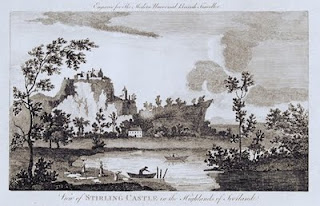I am descended in one branch from a long line of Tipperary Chadwicks who first came to Ireland from England in the 17th century. Chadwicks of Ballinard in the county and their near neighbours the Coopers of Killenure frequently intermarried. My 3x great grandparents were William Cooper and Rebecca Chadwick; and William’s sister Elizabeth married Rebecca’s first cousin John Craven Chadwick.
While William and Rebecca’s line (and mine) remained in Tipperary until the 1960s, John and Elizabeth’s son John Craven Chadwick junior emigrated to Canada in 1830 and founded a Canadian Chadwick dynasty. They settled eventually in the town of Guelph, 60 or so miles west of Toronto. Guelph was a flourishing colonial trading post, established by the Canada Company in 1827 on land which was already a market and meeting place for indigenous Canadians before the British arrived.
Frederick Jasper Chadwick (1838-1891)
as Mayor of Guelph, Ontario in 1877
Chadwicks played no small part in the development of the city. John junior served in several militia units during the rebellions of 1837 which sought to overthrow British rule in Canada. He subsequently served on the Commission for Peace locally. His son Jasper also did military service: Jasper and his father were first in line when the Guelph Rifles (No. 1 Company) were being formed in February 1857, and Jasper rose to the rank of Captain.
Jasper was a prominent businessman, a Provincial Land Surveyor who served on the town and county council and was elected Mayor of Guelph in 1877. It was a big year for Guelph, the 50th anniversary of its founding, and Jasper must have presided over many celebratory events. He was from 1871 to 1885 the proprietor of the conservative Guelph Herald newspaper, and under his tenure it went in 1872 from a weekly to a daily edition. (The Herald was eventually bought up in 1924 by its lifelong rival the radical Guelph Mercury, which still publishes to this day.)
Guelph Town Hall (built 1856)
(pictured in 1879, the year the town became a city)
Guelph Town Hall which housed the mayoral offices (as well as courts, market stalls, jail and library) had been built in 1856, during a period of prosperity triggered by the arrival of the Grand Trunk Railroad in the town that year. Guelph itself had only been granted town status a year earlier. That prosperity was soon boosted with another rail connection to the outside world by the Great Western Railway.
Guelph Board of Trade was determined to capitalise on these transport links and attract manufacturers to the town, and Jasper Chadwick was a founding director of the Guelph Gas Works, one of the Board’s schemes to that end. Its gas first came on stream on 18th January 1871. Gas meant heat and light, which in turn meant longer working hours in factories; and like moths to a flame, industries were indeed drawn to Guelph. (The gasworks survived until they were demolished in the 1960s.)
Guelph Junction Railway’s monopoly-busting Freight Office
(the line was leased to the Canadian Pacific Railway from 1888)
In 1879, two years after Jasper’s mayorship, he could take some credit when Guelph was declared a city. Three years later, when the Grand Trunk and Great Western Railways merged, fears of a monopoly of rail access to the city prompted Chadwick and several other leading citizens to found the city-owned Guelph Junction Railway. At a dinner in his honour that year, he could say with much justification:
“When I came to Guelph in 1848 it was a small place; the spot on which is now erected the Wellington Hotel [in which he was speaking] being a lumber yard and scarcely a building of any pretensions between here and the market place. Her population at that time being counted in hundreds where now there are thousands. Coming here at an early period of my life I might almost claim to be a native, and as you have been kind enough to express in the address, I have been identified with everything that has made Guelph what she is. Nothing, since I was able to take my share, has been done for the advancement of our good city in which I have not taken an active part.”
Well done, Jasper Chadwick - power, media and transport tycoon, citizen and benefactor of Guelph!
Guelph Junction Station in 1986
(built in 1888, demolished in 1989)
Photo by William D. Miller


















